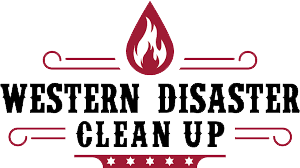When a flood strikes, it leaves behind a trail of devastation that affects your property and peace of mind. The sight of waterlogged homes and possessions is disheartening, and the challenges that follow are daunting. It’s a situation that requires swift, prudent action.
Flood cleanup isn’t about tidying up and getting things back to normal; it’s about safeguarding your health, property, and future. Neglecting the proper steps in flood cleanup leads to structural damage and health-related problems. This is why understanding the correct approach to flood cleanup is crucial.
This blog is here to help you with flood cleanup from start to finish. Whether you’ve experienced a flood or want to be prepared for the future, we’ve got all the info and tips you need so you can make smart choices. After reading, we hope you’ll feel more confident and ready to handle flood cleanup, protecting what’s important to you.
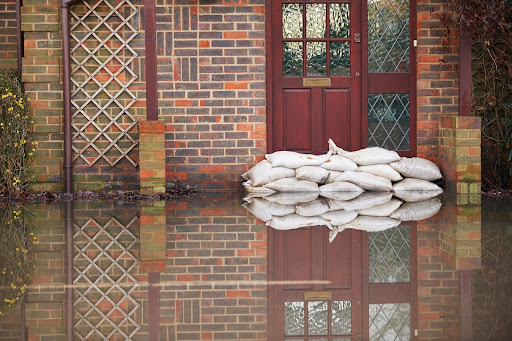
Understanding Floods
Floods vary by type and cause. Riverine floods occur due to the following:
- When rivers overflow due to rain or snowmelt.
- Flash floods are sudden and intense.
- Coastal floods result from storms and high tides.
- Urban floods are due to poor drainage.
- Pluvial floods happen from heavy rain.
Knowing what causes floods is crucial for staying prepared.
- Heavy rain leads to river overflows or flash floods.
- Snowmelt overwhelms rivers.
- Coastal areas flood during storms.
- Dam failures release vast amounts of water.
- Urban development changes drainage patterns.
Floods are categorized by severity. Minor floods cause minimal damage, such as street flooding. Moderate floods are more damaging, impacting homes and infrastructure. Major floods are highly destructive, submerging communities and requiring evacuations.
Catastrophic floods are rare but devastating, leading to widespread destruction and long-term recovery efforts. Understanding these aspects of floods helps assess risks and take preventive measures.
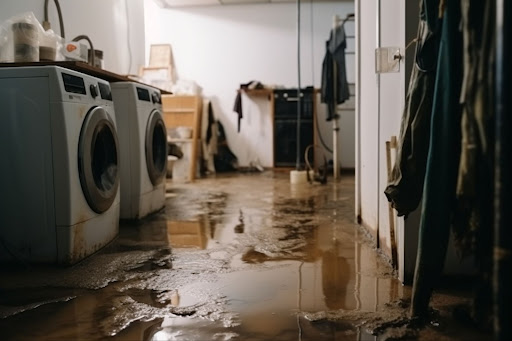
Immediate Actions After a Flood
If you live in an area prone to flooding or your safety is at risk, evacuate immediately. Follow any official evacuation orders if they’ve been issued. If necessary, reach out to local authorities or emergency services for assistance. Be cautious of floodwaters; they often conceal dangers like submerged objects, strong currents, and contaminants.
1. Putting Safety First
You will need to address your utilities if you experience flooding. Locate the main gas, electricity, and water switches in your home. Turning them off is crucial to prevent gas leaks, electrical shocks, or water damage. Only turn them back on once a qualified professional has checked your home.
2. Documenting the Damage
Once safety is ensured, it’s essential to document the flood damage thoroughly. This documentation will play a vital role in insurance claims and assistance applications.
Capture clear photographs and videos of the affected areas, including structural damage, water levels, and any damaged belongings. Take detailed written notes, including dates and times. Keep all relevant documents, such as insurance policies and contact information for adjusters, in a safe and easily accessible place.
3. Contacting Insurance
Contact your insurance provider to report the flood damage and start the claims process. Be prepared to provide detailed information, photographs, and documentation.
Contact local authorities and emergency services to stay informed about safety advisories, road closures, or available assistance for flood victims. Stay updated on disaster relief programs and resources offered by government agencies to aid in your recovery.
Remember that thorough documentation and timely communication significantly contribute to a smoother recovery process.
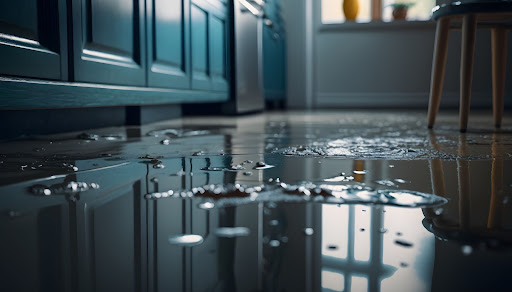
Health and Safety Precautions
Floodwater carries a mix of harmful substances such as bacteria, viruses, chemicals, and debris, posing potential risks to you and your family. Avoiding direct contact with floodwaters is crucial, as they may contain hidden hazards. Even minor cuts or scrapes put you at risk of infection.
1. Dealing With Contaminated Water
Equip yourself with appropriate protective gear, including waterproof boots, gloves, and protective clothing. Consider using an N95 respirator to filter out airborne contaminants, providing an added layer of defense.
Frequent handwashing is essential for maintaining cleanliness. Use soap and clean water, especially after contact with floodwater or any objects it may have touched. If clean water is unavailable, use hand sanitizer containing at least 60% alcohol to ensure adequate sanitation.
To prevent potential contamination, take the time to meticulously clean and disinfect all items and surfaces that have had contact with floodwater. Utilize an EPA-approved disinfectant or a mixture of bleach and water (one cup per gallon) for thorough disinfection.
2. Mold and Mildew Prevention
To prevent mold and mildew growth, ensure your home is completely dried out within 24-48 hours after the flood. Speed up the process and increase ventilation by using dehumidifiers, fans, and opening windows.
Dispose of materials that cannot be thoroughly dried and cleaned, such as drywall, insulation, and carpet padding. These items harbor moisture and promote mold growth even after the rest of your home is dry.
Apply mold and mildew-resistant cleaners and give every surface a good scrub. Be thorough and attentive, especially in concealed spaces like wall cavities and under flooring. These dark nooks and crannies are the perfect place for hidden mold and mildew to flourish.
You will also want to monitor indoor humidity levels with a hygrometer and aim to keep them below 60%. Maintaining lower humidity levels is essential in preventing mold from taking hold and proliferating.
3. Proper Use of Personal Protective Equipment (PPE)
During flood cleanup, using the proper personal protective equipment (PPE) to minimize exposure to hazards is crucial.
Wear safety goggles or a face shield to protect your eyes from potential splashes, debris, and contaminants. Depending on the situation, it’s wise to consider using a respirator mask to filter harmful particles and gases. N95 masks are suitable for many flood cleanup tasks.
Don’t forget to protect your hands by wearing sturdy gloves capable of shielding them from sharp objects, chemicals, and potential contaminants. In situations with a high risk of exposure, you should consider donning a full-body protective suit for comprehensive coverage.
Understanding and following these health and safety precautions is essential for a safe and successful flood recovery process.
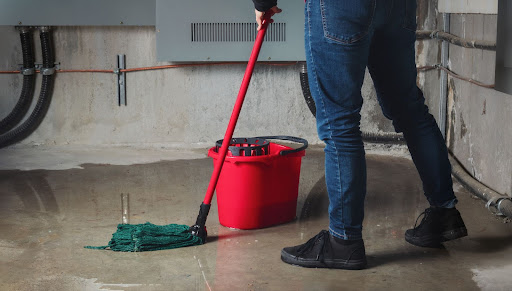
Hiring Professionals vs. DIY Cleanup
When tackling flood cleanup, you’ve got choices to make. Should you call in the professionals or roll up your sleeves and go the DIY route? Let’s break down the pros and cons of each approach.
1. Hiring Professionals
Hiring professionals for flood cleanup comes with its advantages. Firstly, these experts bring a wealth of knowledge and experience to the table, guaranteeing a comprehensive and effective restoration process. They also come equipped with specialized tools and equipment, including heavy-duty pumps, dehumidifiers, and moisture meters, ensuring the job is done correctly.
Another benefit is the speed at which professionals operate, reducing the exposure of your property to further damage and the risk of mold growth. Additionally, their expertise extends to documenting the extent of the damage, a valuable asset when navigating insurance claims and ensuring fair compensation.
On the flip side, there are some drawbacks to hiring professionals for flood cleanup. One notable concern is the cost, which may be substantial, particularly in the case of significant flood damage. This expense may not align with everyone’s budget, making it a less viable option for some.
Scheduling presents challenges, especially during widespread flooding events when many individuals and properties require professional assistance simultaneously. Securing timely services might be more challenging under such circumstances, potentially delaying the cleanup process.
2. DIY Cleanup
Engaging in a do-it-yourself (DIY) approach for flood cleanup has advantages. Firstly, it often translates to cost savings, as you bypass the expenses associated with hiring professionals. This budget-friendly option is appealing to many.
DIY empowers you with complete control over the process. You dictate the pace, allowing yourself to tailor the cleanup to your preferences and priorities. Furthermore, DIY cleanup is a valuable learning opportunity, enabling you to acquire practical skills and knowledge that will be helpful in future situations.
However, there are some downsides to opting for a DIY flood cleanup approach. One notable drawback is the potential lack of specialized knowledge and expertise, which may result in an incomplete or improper restoration process. DIY efforts might not fully address all the nuances of flood cleanup.
Tackling this process on your own is time-consuming, potentially extending the duration your property is exposed to the risk of further damage and mold growth. Additionally, there are safety concerns to consider. Handling floodwater and contaminated materials without proper precautions poses health risks, emphasizing the importance of protective measures and knowledge.
3. When to Call in the Pros
There are situations where it becomes evident that professional assistance is the wisest choice:
- Extensive Damage: If your property has sustained significant damage or requires substantial structural repairs, calling the professionals is the most appropriate action.
- Health Hazards: When floodwater contains hazardous substances such as sewage or chemicals, it’s imperative to have experts handle the cleanup safely and effectively, minimizing health risks.
- Mold Concerns: The presence of mold, whether visible or suspected, warrants professional attention. Experts assess the extent of the mold issue and take appropriate measures to address it thoroughly.
- Time Constraints: In cases where a rapid cleanup is essential to prevent further damage or mitigate health hazards, professional assistance is invaluable. Their expertise and resources allow for a swift and efficient response to urgent situations.
Rise Above Flood Damage With Western Disaster Clean Up
In a flood or any other crisis, having a dependable partner is essential, and that’s where Western Disaster Clean Up excels. We’re available 24/7, ready to handle any disaster, big or small. We have extensive experience managing various emergencies like floods, fires, sewage backups, and more.
We serve Northern Utah, prioritizing prompt responses and top-quality results. We even assist with insurance coverage, making us the go-to experts for disaster cleanup. Contact Western Disaster Clean Up at (385) 381-6254 to start your recovery journey.
